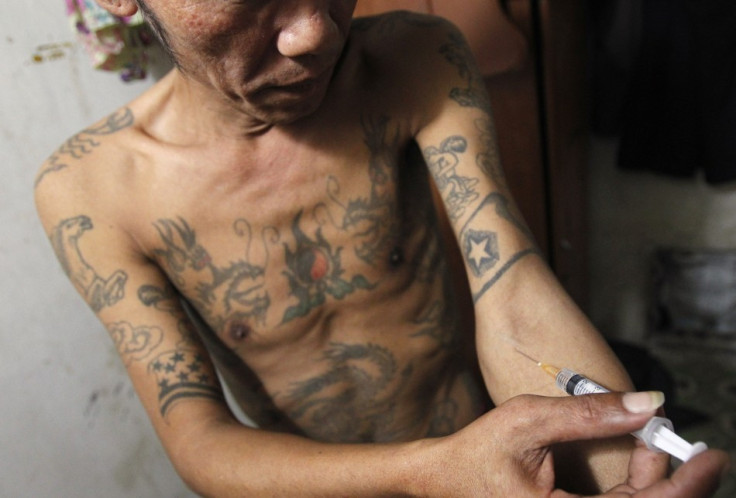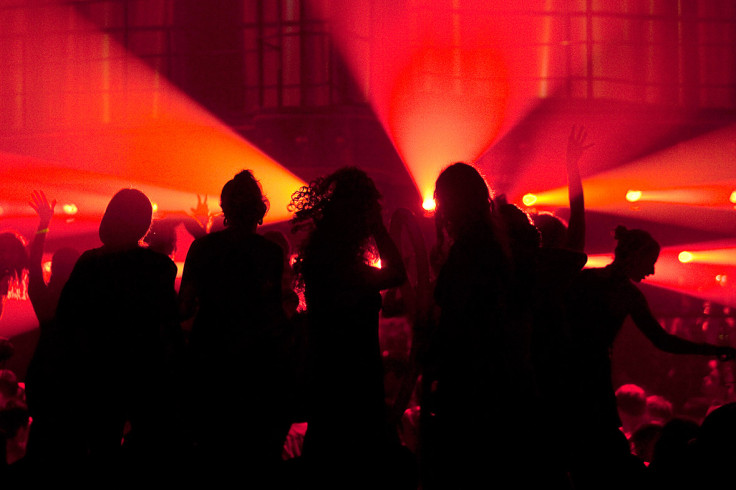Britain's Meow Meow crisis: Chemsex, creatine and needles making mephedrone deadlier than ever

The recent story that mephedrone put six Tyne and Wear teenagers in hospital is a stark reminder that the drug known variously as M-Cat and bubble and formerly a so-called legal high, has gained significant traction on the UK drug scene, fully five years after it was criminalised.
Mephedrone is one of a range of stimulant drugs called cathinones with similar effects to amphetamine in that they put the body's cardiovascular system – blood pressure, heart rate - into overdrive. M-Cat first came to public attention in 2009: due to a massive Far Eastern seizure of the main chemical used to make ecstasy, there was an ecstasy 'drought' in the UK. At the same time, cocaine purity had dipped, creating a perfect storm for a new stimulant drug to step into the breech.
After cannabis, UK drug users have always favoured stimulants like amphetamines, cocaine and ecstasy over other forms of non-medical drug use, going back to the 1960s when Mods and Rockers had speed-fuelled punch-ups on Britain's beaches. What happened in 2009 was a double-whammy; here was a perfectly legal drug lauded by internet chatter and online sellers as doing absolutely what it said on the tin. So not only did it attract regular users unhappy with the quality and lack of availability of their regular drugs, but a whole new customer base of young experimenters and sellers, attracted by the legality.
What followed that year was a media meltdown; the tabloids dubbed it 'maiow, maiow' and the drug was hardly off the front pages. Many deaths were wrongly attributed to the drug, but behind the headlines mephedrone was clearly causing problems, especially among young naïve users with little or no experience of drug use. Many did end up in hospital, although fortunately most recovered.
The drug seemed especially popular in rural areas away from the more inaccessible main drug-dealing city centres, because it could be bought online and delivered by the postman. Media pressure built up during 2009 and into 2010, when the drug was eventually controlled in Class B of the Misuse of Drugs Act, the same as amphetamine. But the drug had over a year to gain a foothold on the drug scene; the prediction was that it would become just another street drug – precisely what has happened.
Apocalypse Meow: Britain's mephedrone problem revealed
- In 2013 the UN reported that the UK was the EU's largest market for meow meow
- That same year, it was reported that usage had increased 300% since the drug was criminalised.
- Around three million Britons aged 16-59 have tried Mephedrone.
- The drug was linked to 22 deaths in 2013, more than double the 9 reported in 2011.
So where are we at with mephedrone? The drug comes as a white or yellowish powder which is usually snorted like cocaine or can be swallowed in a small wrap of paper ('bombing'), or as a pill or capsule. A small, but nonetheless worrying minority inject the drug. In terms of national average per gram figures, mephedrone costs around £15 for the powder form, compared to about £10 for amphetamine, £20 for ketamine and £40 for cocaine, although the price varies depending on region and purity.
When it first appeared, mephedrone was pretty pure; now as a street drug, it is cut with a range of white powders to bulk it out including monosodium glutamate, caffeine, creatine (an ingredient of energy products) and benzocaine.
According to latest government figures for 2013/14, around three million people aged 16-59 have tried mephedone, about the same figure as for ecstasy, with about half a million having used the drug in the 12 months covered. Mephedrone has increasingly been mentioned on death certificates – nine in 2011, 14 in 2012, 22 in 2013. But that doesn't mean mephedrone was the cause of the death, simply that it was one of the drugs found at autopsy.
Mephedrone seems to attract a very wide range of users, from vulnerable and marginalised young people in socially deprived areas, through to clubbers and festival goers and those who inhabit the heavy end of the gay party scene. Some in this group engage in what has become known as chemsex, where high-risk sexual activity is fuelled by MCAT (as well as crystal meth). What is especially concerning for this group is their willingness to inject the drug.
Because the drug is a stimulant, the effects wear off quite quickly, and so, unlike heroin, an injector will need to repeat the process several times a day. This can cause horrific physical injuries and a significant increase in the risk of contracting HIV and hepatitis through sharing injecting equipment.

More generally, the effects and risks are similar to amphetamine. Users experience a rush of energy and euphoria and are able to stay awake for long periods of time. Those who snort can experience extremely sore nasal passages, throats and mouths, with burns or cuts caused by the chemicals sometimes leading to nose bleeds.
Hard to stop
MCAT can also affect the heart. Some users report heart palpitations, or an irregular or racing heartbeat, which may last for some time after taking the drugs. Users can experience blurred vision, hot flushes and muscle tension, particularly in the jaw and face, and some people report that their fingers and other extremities have taken on a blueish pallor after using mephedrone. Nausea and vomiting has been reported, particularly if mixed with other drugs such as alcohol or cannabis.
Once users have started using the drug in a particular session, it can be very hard to stop, with compulsive use leading to a number of unpleasant side effects including insomnia, involuntary muscle clenching and hallucinations. In some cases, it seems, regular or heavy use may develop into psychological dependency.
But mephedrone isn't the only cat in the cathinone bag. There is a confusing array of letters and names, all signifying drugs that are also controlled like MCAT; these include MDPV (which appeared originally as Ivory Wave); MEC; alpha-PVP; flephedrone and methylone. There are no figures on the use of these other cathinones, but some, like MDPV, are potentially more potent than MCAT. However it is unlikely that anybody could tell the difference if they just bought a 'white power' from a dealer in a club or bar. And people will just buy a white power without really knowing what it is.
The Global Drug Survey is a self-reporting online survey on various aspects of drug use. The 2014 survey attracted 80,000 respondents from 17 countries. Nearly 5% reported they had bought 'a mysterious white powder'. It really is a case of 'buyer beware' because there is no quality control on the illicit drug market.
Harry Shapiro is Director of Communications and Information at DrugScope. Find them on Twitter @DrugScope or visit www.drugscope.org.uk.
© Copyright IBTimes 2025. All rights reserved.





















